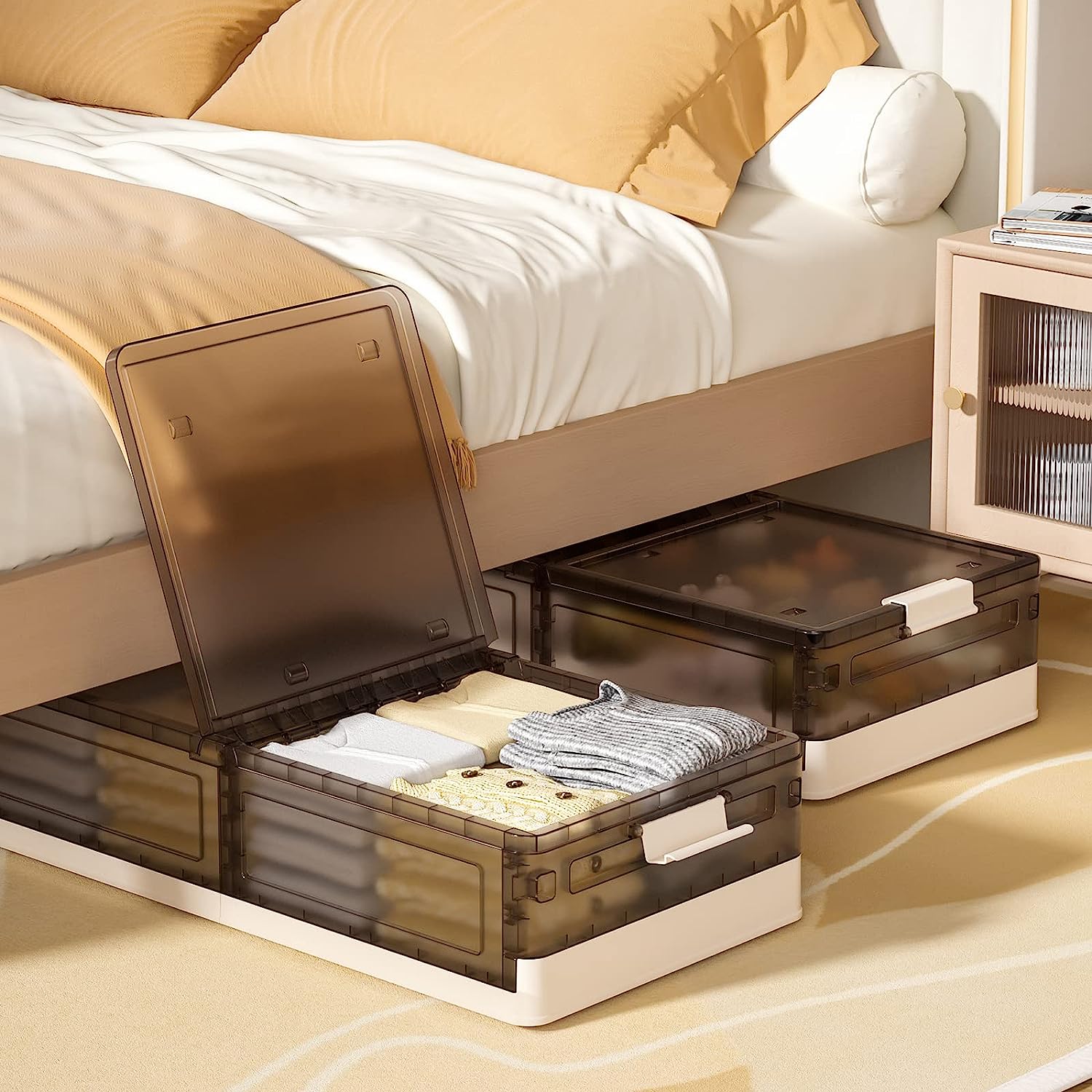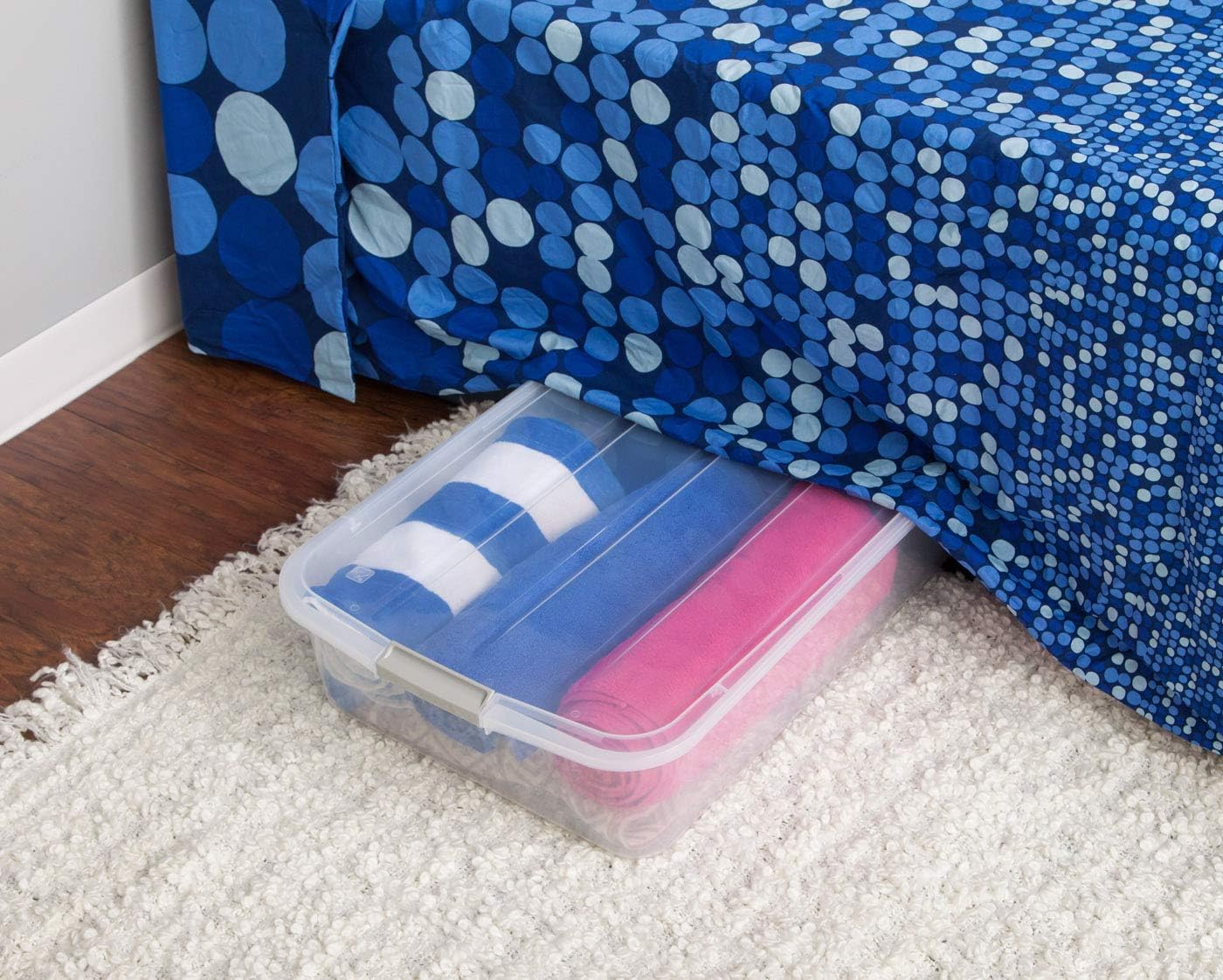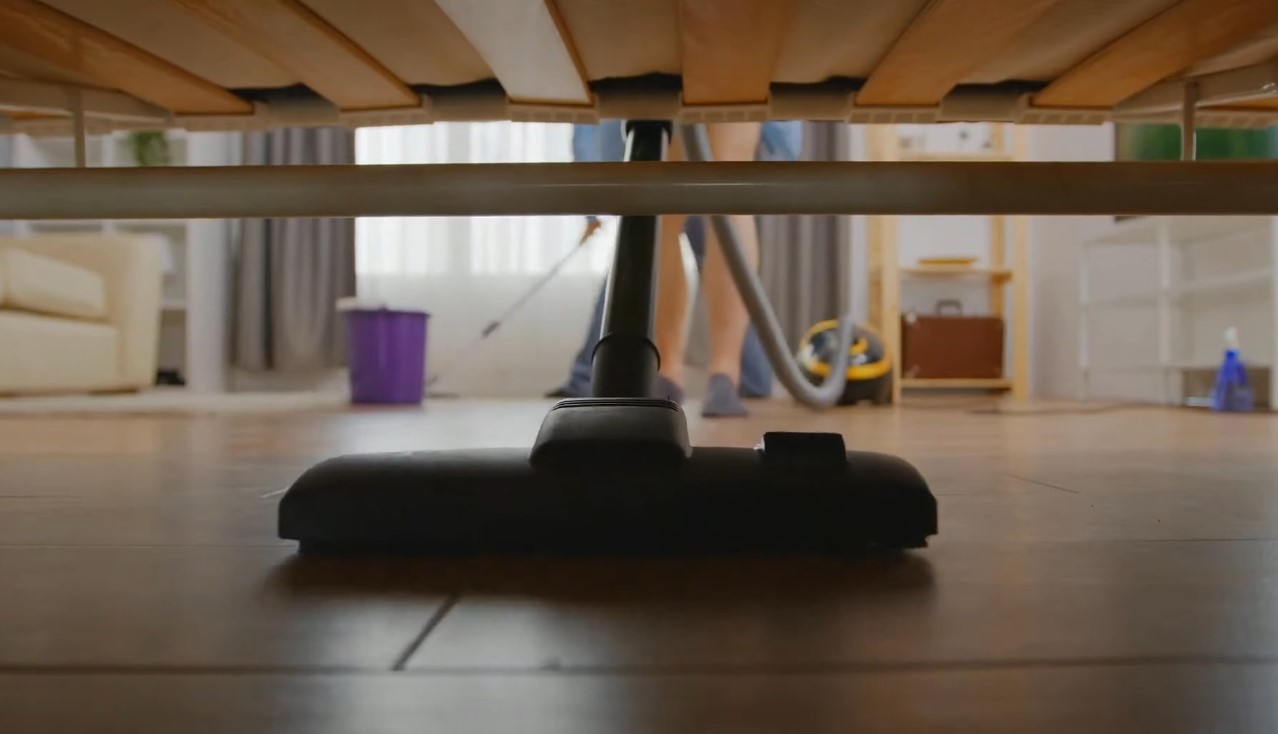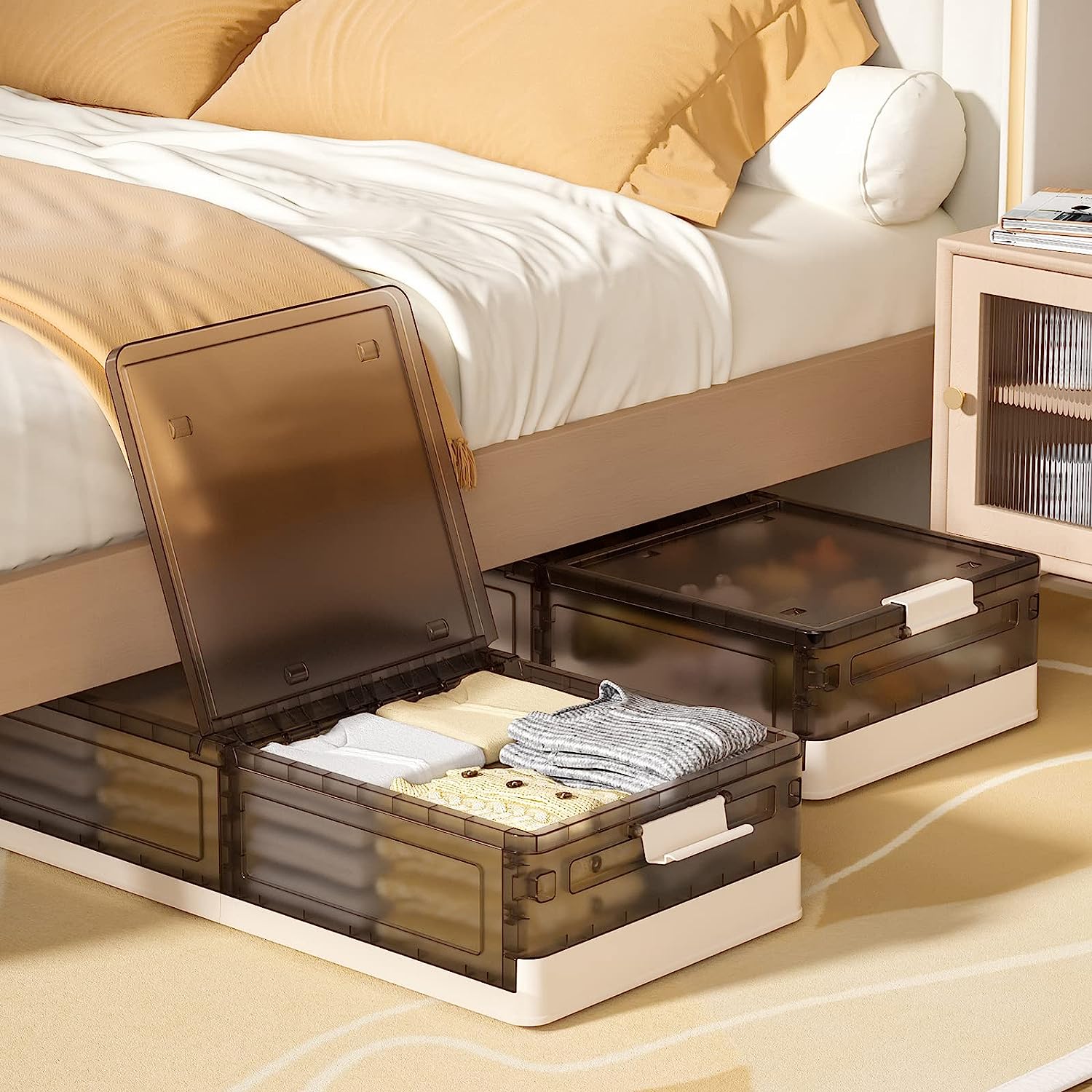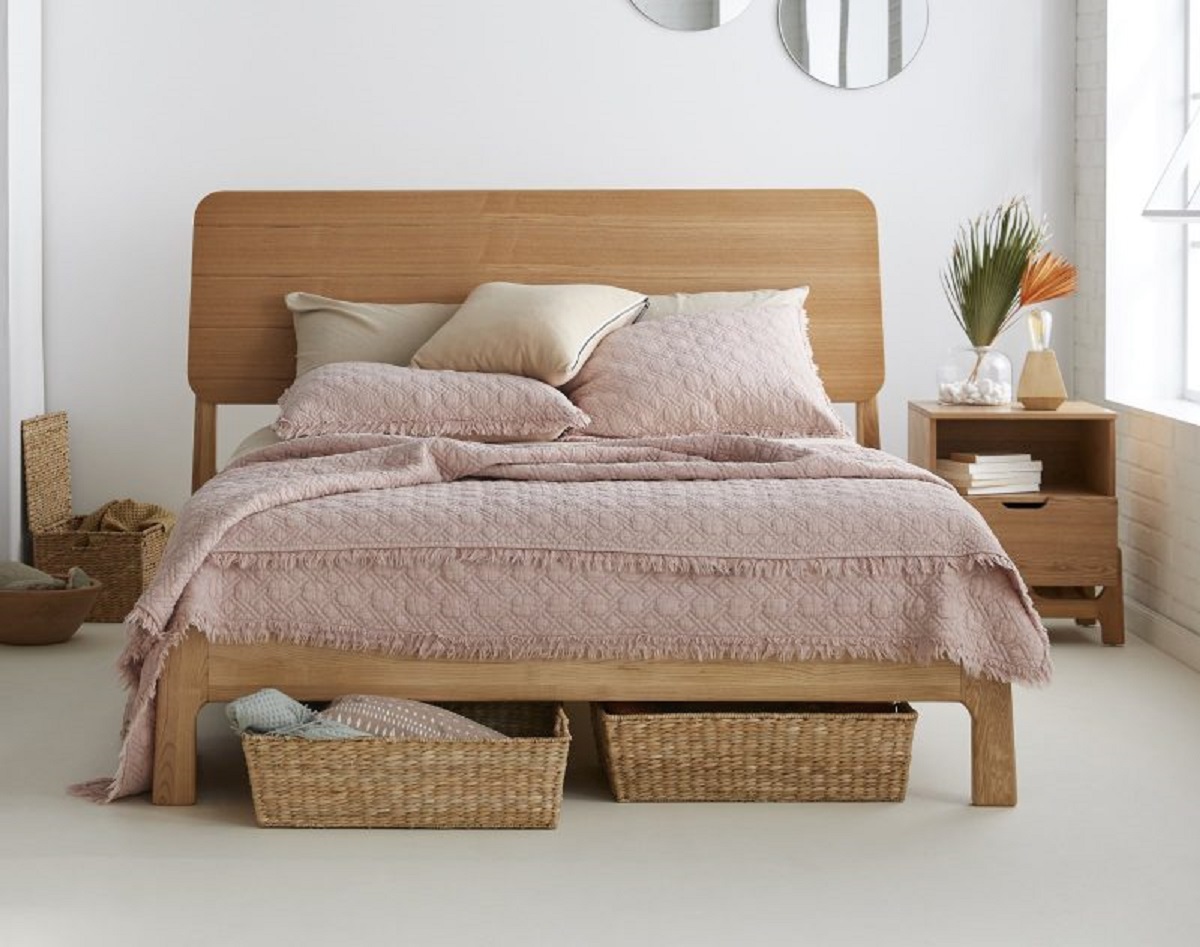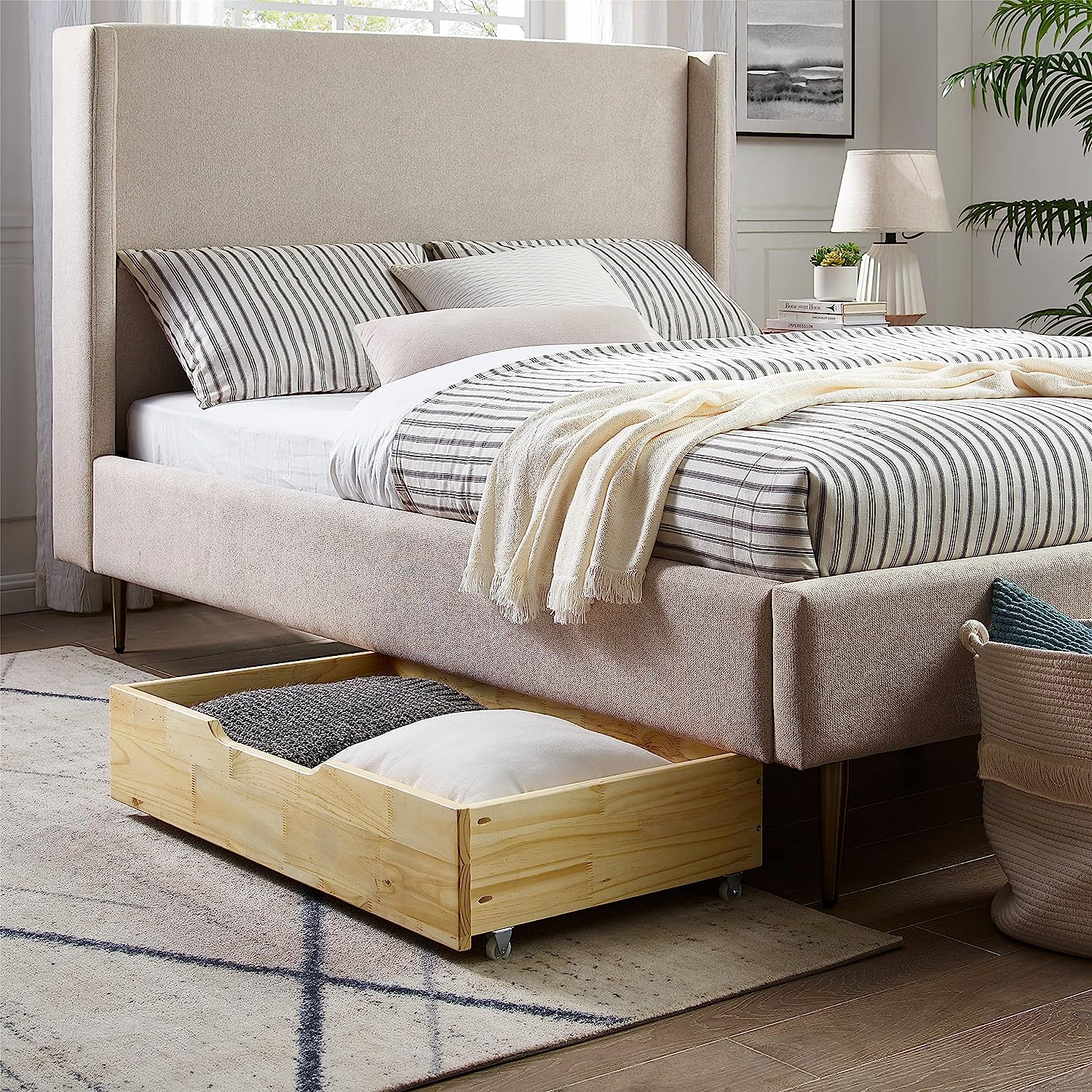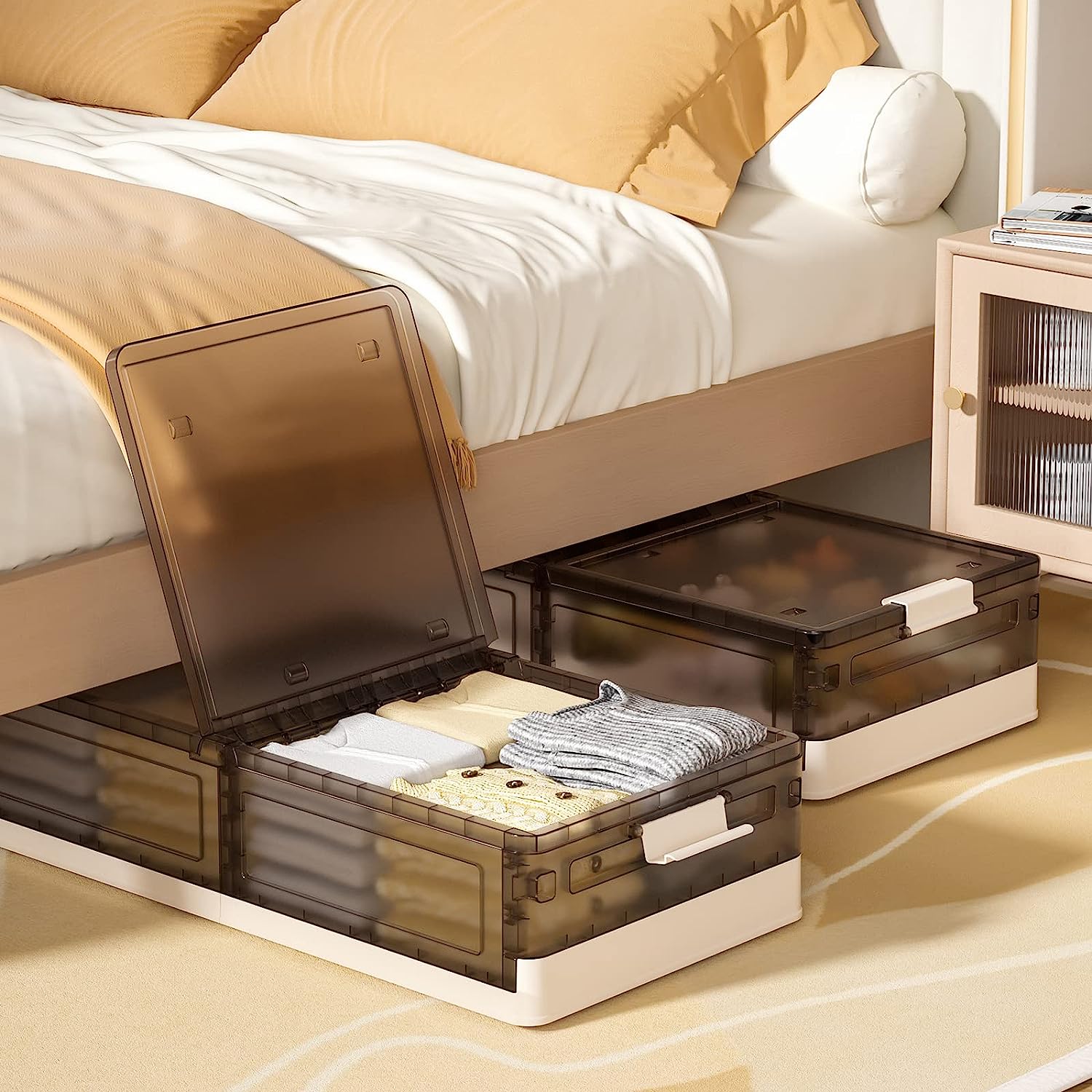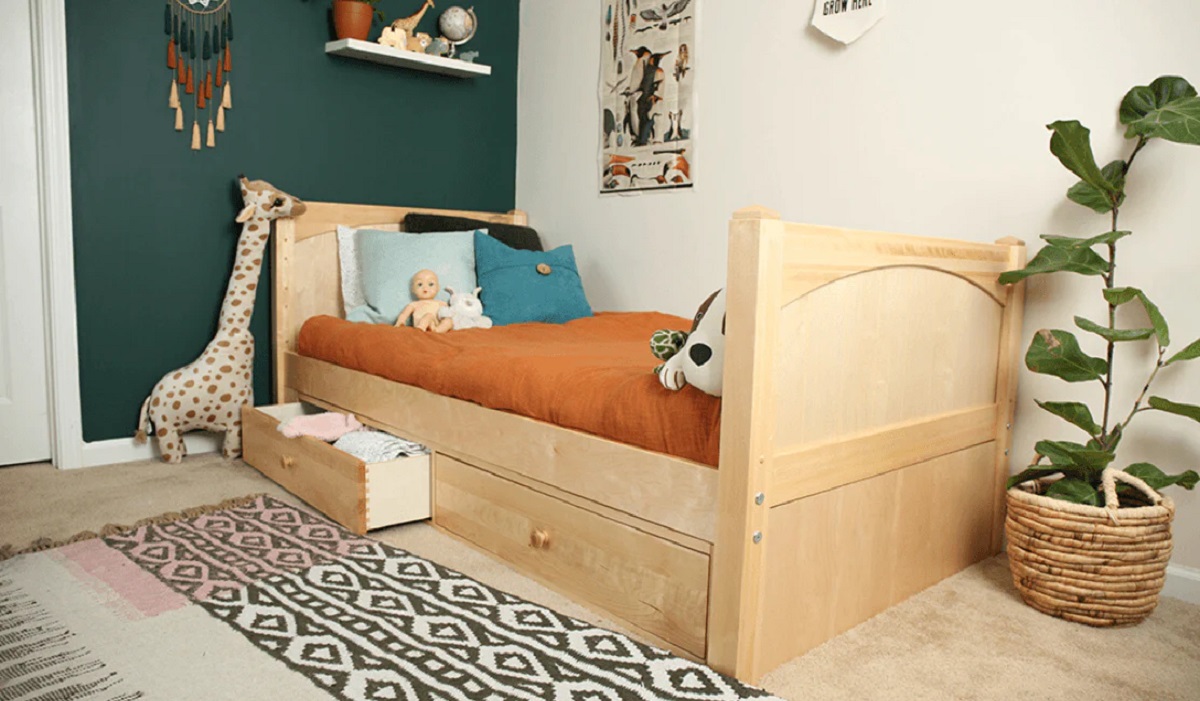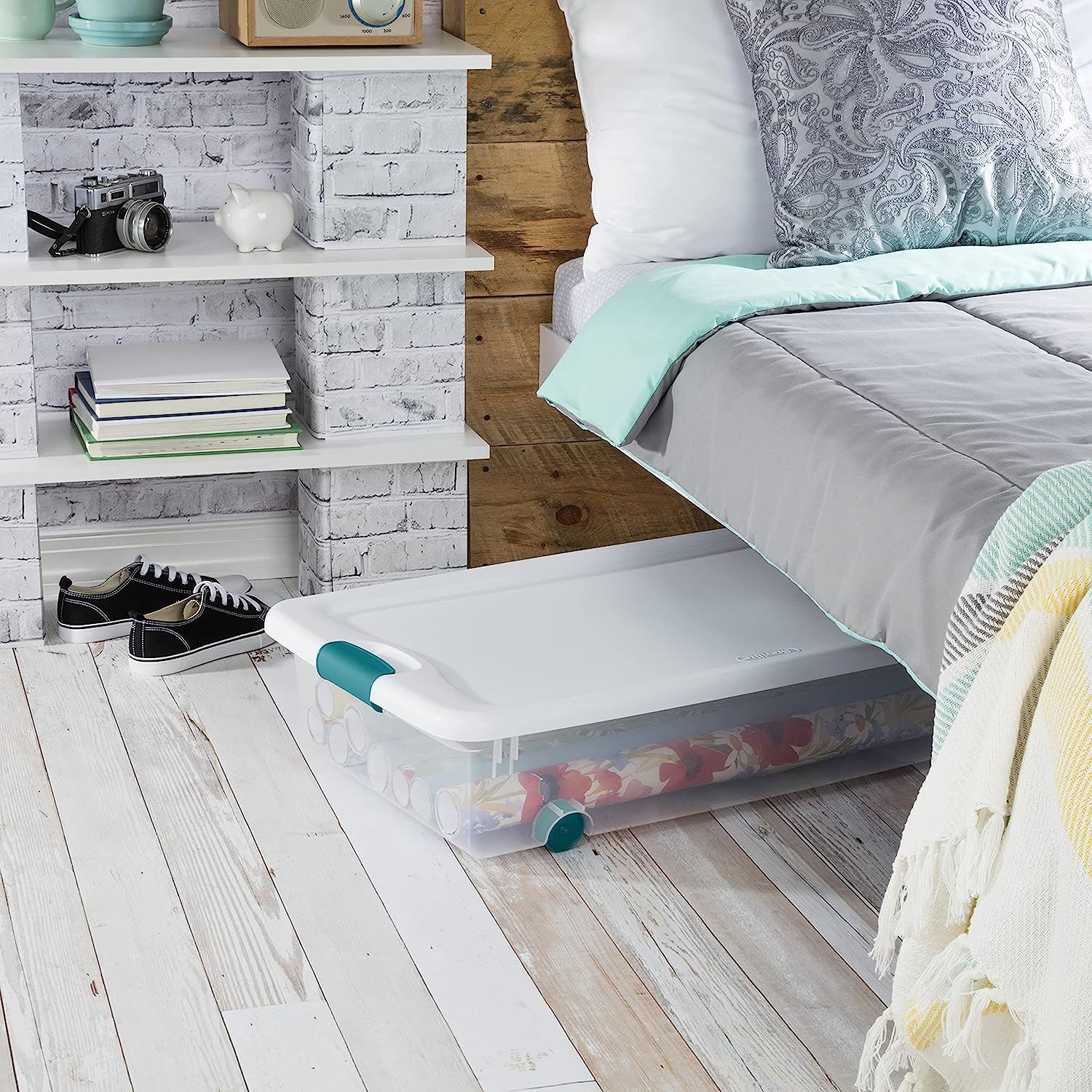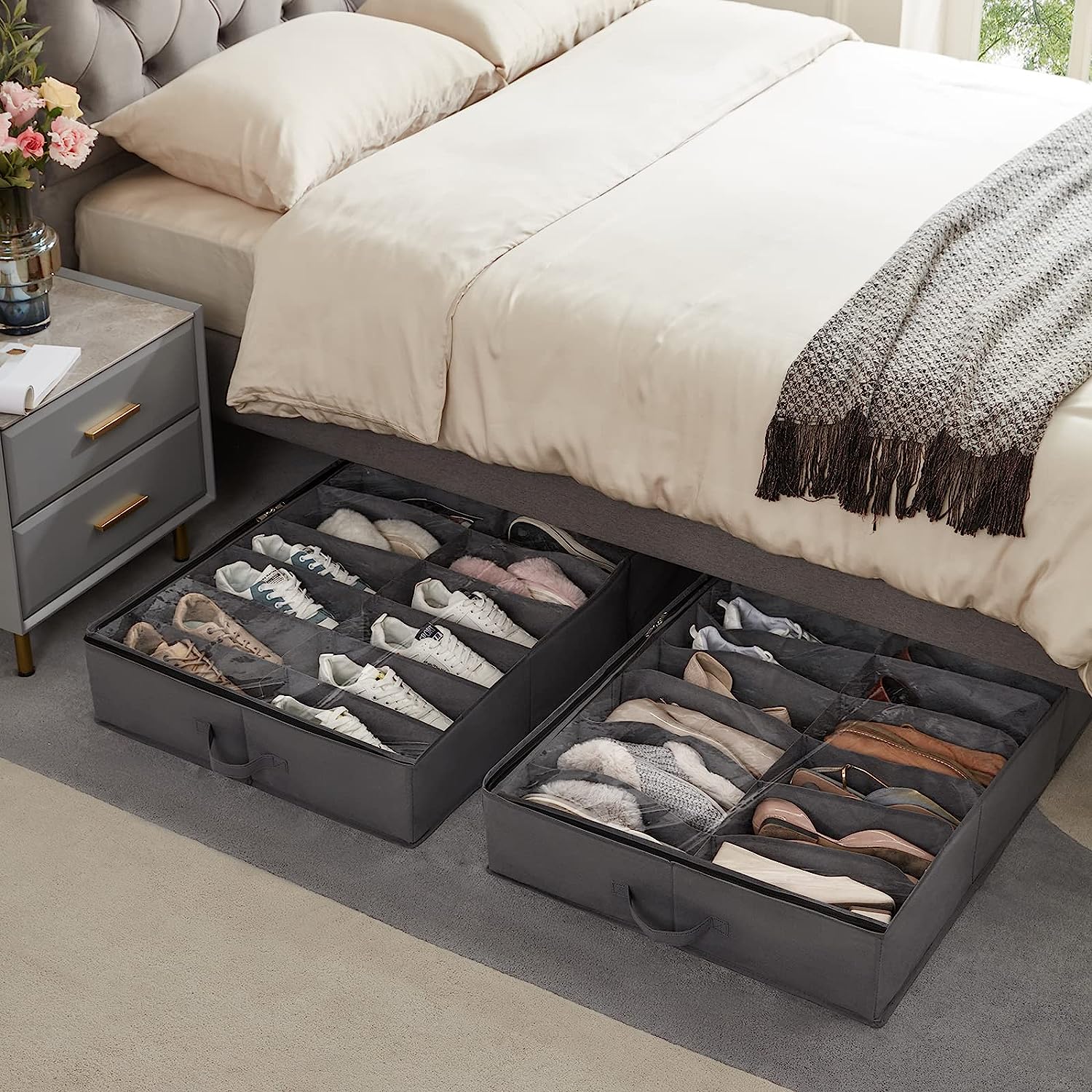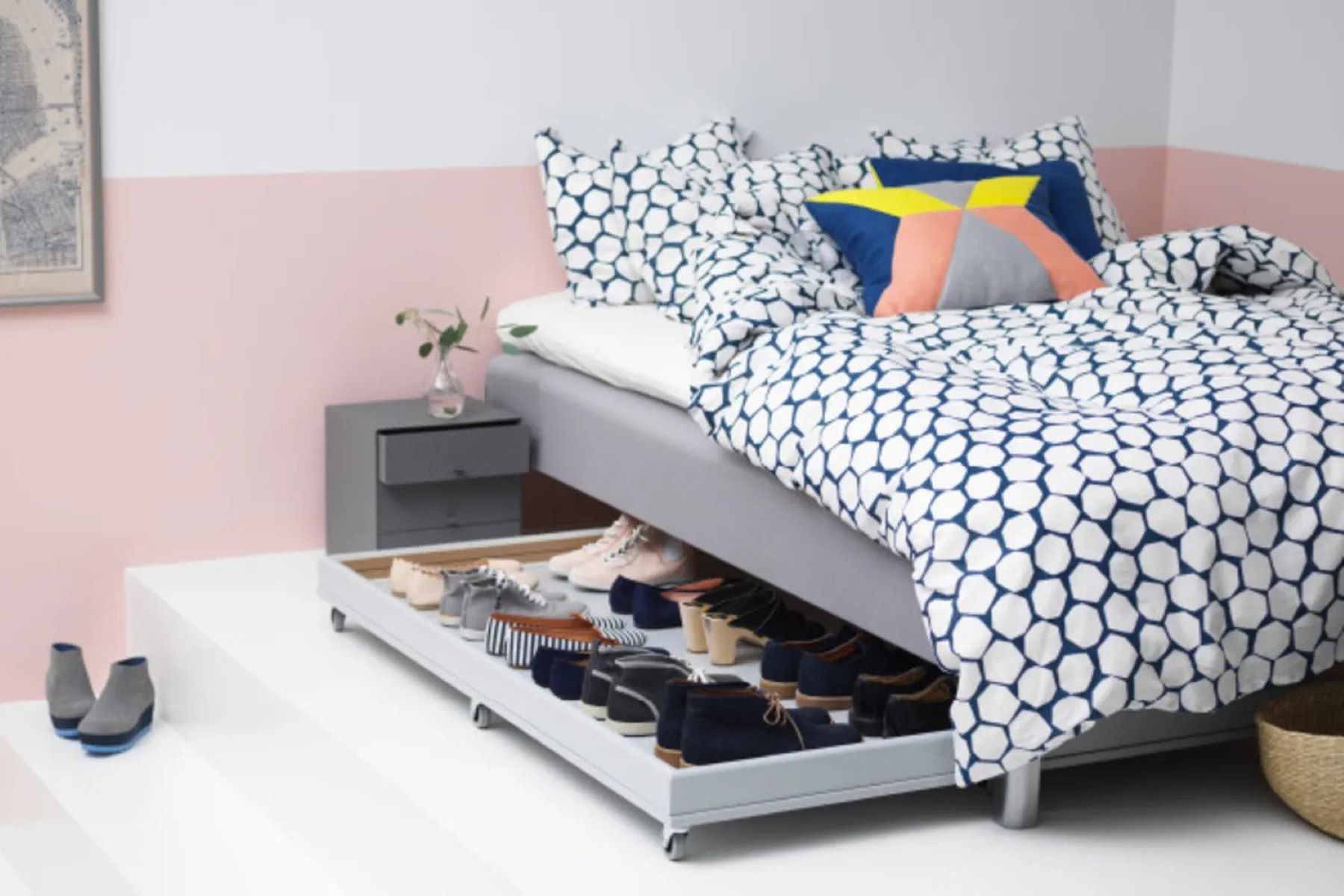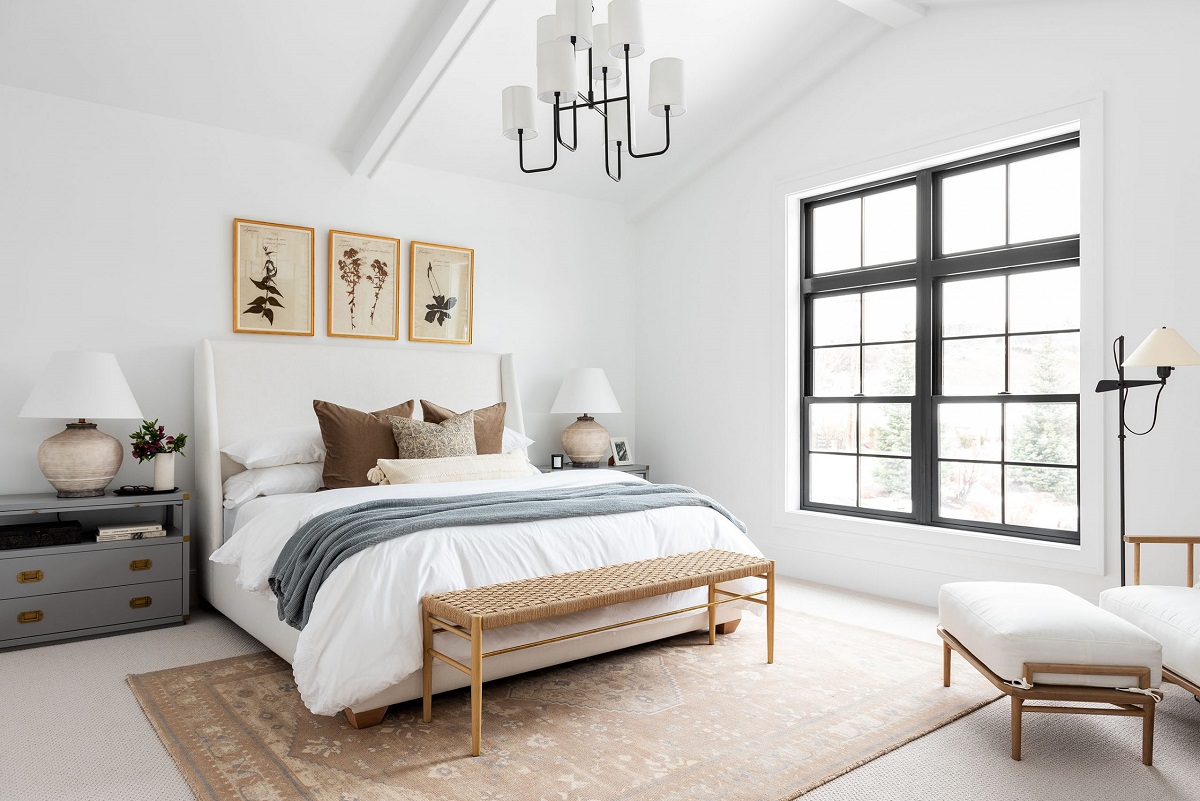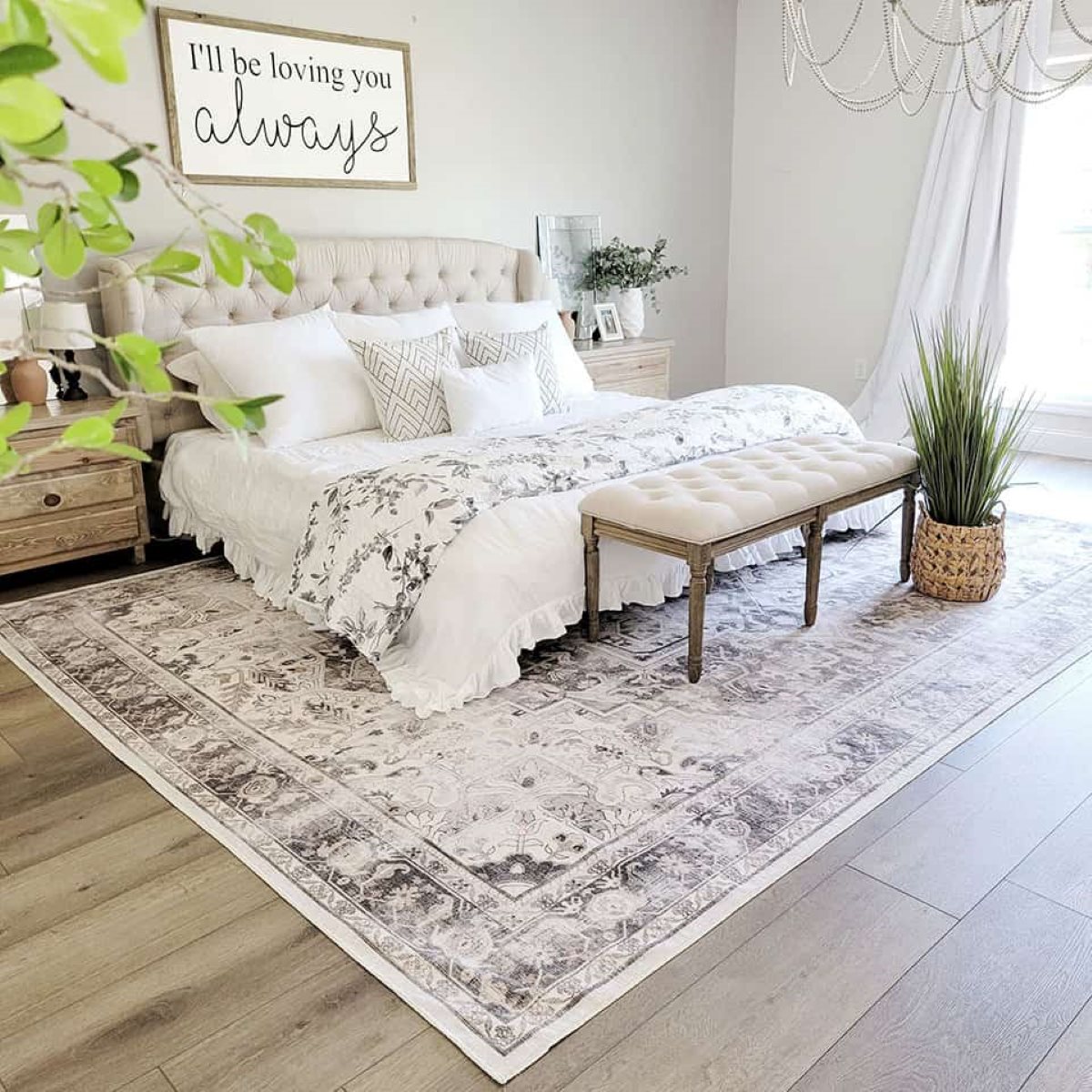Home>Furniture>Bedroom Furniture>How To Block The Empty Space Under Your Bed
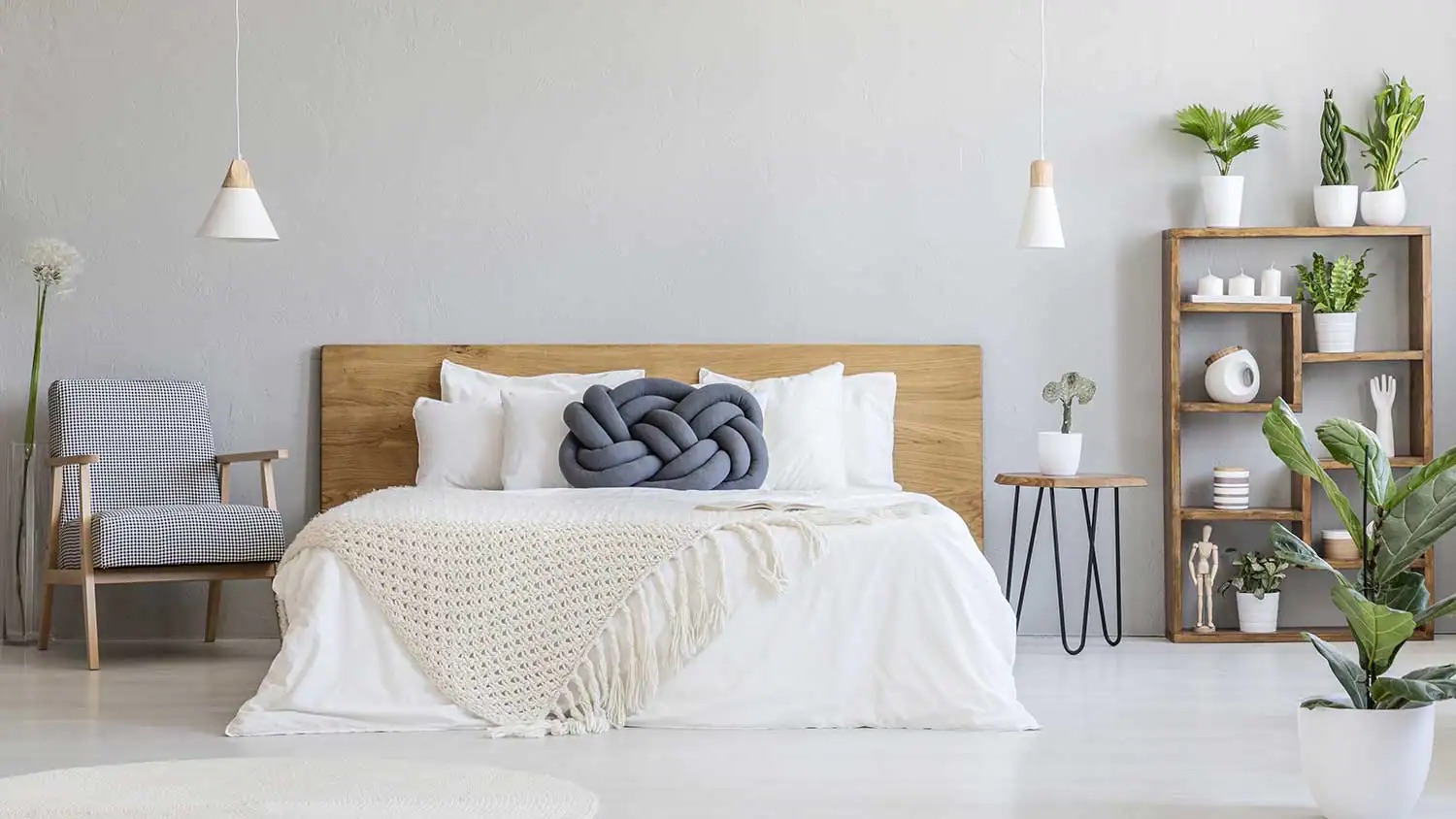

Bedroom Furniture
How To Block The Empty Space Under Your Bed
Modified: January 20, 2024
Learn how to effectively block under the bed with our expert tips and tricks. Upgrade your bedroom furniture with our top recommendations for a clutter-free space.
(Many of the links in this article redirect to a specific reviewed product. Your purchase of these products through affiliate links helps to generate commission for Storables.com, at no extra cost. Learn more)
Introduction
Creating a comfortable and inviting bedroom is essential for a good night’s sleep. While we often focus on choosing the right mattress, pillows, and bedding, there’s another important aspect that often gets overlooked – blocking the under bed area. Blocking under the bed not only enhances the aesthetics of your bedroom but also contributes to the overall functionality and cleanliness of the space.
When we talk about blocking under the bed, we mean covering the empty space between the floor and the bed frame. This space, if left unblocked, can become a haven for dust, dirt, and even pests. Additionally, an unblocked under bed area can affect the airflow and potentially impact the quality of your sleep. By taking the time to properly block under the bed, you can create a more visually appealing and hygienic sleeping environment.
In this article, you will discover why blocking under the bed is important and the common issues that can arise if this area is left unblocked. We will also provide you with a step-by-step guide on how to effectively block under the bed and offer some alternative methods to suit different needs. So, let’s dive in and transform your bedroom into a clean and inviting sanctuary!
Key Takeaways:
- Blocking under the bed is crucial for a clean, hygienic, and visually appealing bedroom. It prevents dust, pests, and allergens, while also improving airflow and simplifying cleaning routines.
- Alternative methods like bed skirts and storage containers offer flexibility in blocking under the bed, catering to individual preferences and storage needs. Embrace the benefits of a well-blocked under bed area for a healthier sleep environment.
Read more: 10 Best Under Bed Storage Bins for Your Home
Why Blocking Under the Bed is Important
Blocking under the bed may seem like a minor detail, but it plays a significant role in maintaining a clean and healthy bedroom environment. Here are a few reasons why blocking under the bed is important:
- Prevents dust and allergens: The under bed area is a prime spot for dust accumulation. Without proper blocking, the dust can circulate in the air and settle on your bedding and furniture, leading to allergies and respiratory issues. By blocking under the bed, you create a barrier that reduces the amount of dust and allergens in your bedroom.
- Keeps pests away: Leaving the under bed area unblocked can attract pests, such as dust mites, spiders, and even rodents. These unwanted guests can disrupt your sleep and pose a health risk. Blocking under the bed with the right materials can help prevent pests from making their home beneath your bed.
- Improves airflow: Proper airflow in your bedroom is crucial for a comfortable sleep environment. An unblocked under bed area can obstruct the natural airflow, resulting in stagnant air and potentially causing discomfort while you sleep. By blocking under the bed, you ensure that air circulates freely, providing a fresh and breathable atmosphere.
- Enhances aesthetics: Blocking under the bed has aesthetic benefits as well. When the under bed area is left unblocked, it can create a cluttered and messy appearance in an otherwise well-designed bedroom. By blocking this space, you achieve a neat and streamlined look, enhancing the overall visual appeal of your bedroom.
- Facilitates cleaning: Cleaning under the bed becomes a breeze when it is properly blocked. Without obstructions, you can easily vacuum or sweep the area, removing any accumulated dust and debris. This simplifies and speeds up your cleaning routine, contributing to a more hygienic sleeping environment.
As you can see, blocking under the bed is not just a matter of appearance, but it also has practical benefits for your health and well-being. Now that we understand the importance of blocking under the bed, let’s explore the common issues that can arise if this area is left unblocked.
Common Issues Caused by Leaving Under the Bed Unblocked
Leaving the under bed area unblocked can lead to a variety of issues that can negatively impact the overall functionality and cleanliness of your bedroom. Here are some common problems that can arise:
- Dust and allergens: When the under bed area is left unblocked, it becomes a magnet for dust, dirt, and allergens. These particles can accumulate and circulate in the air, exacerbating allergies and affecting the overall air quality in your bedroom. This can lead to respiratory problems and disturb your sleep.
- Pest infestation: An unblocked under bed area provides an ideal hiding spot for pests. Dust mites, spiders, and even small rodents can find their way into this space, creating a potential infestation. Not only can this disrupt your sleep, but it can also pose health risks and require expensive pest control measures.
- Difficult cleaning: Without proper blocking, cleaning the under bed area can be a challenging task. Dust and debris easily accumulate in this hard-to-reach spot, making it difficult to thoroughly clean without moving the bed. This can lead to a build-up of dirt over time, affecting the overall cleanliness of your bedroom.
- Reduced airflow: An unblocked under bed area can hinder the airflow in your bedroom. This can result in stagnant air and poor ventilation, making your sleep environment less comfortable and potentially leading to issues such as excessive heat or humidity. Proper blocking allows for better airflow, creating a more pleasant sleeping atmosphere.
- Aesthetically unappealing: Leaving the under bed area unblocked can create a visually cluttered and unappealing look in your bedroom. The sight of dust, debris, and even loose items under the bed can detract from the overall aesthetic appeal of the room. Proper blocking helps maintain a clean and tidy appearance, enhancing the overall visual appeal of your bedroom.
By understanding the common issues that can arise from leaving the under bed area unblocked, you can see the importance of taking the necessary steps to block this space. In the following sections, we will explore the materials needed and provide you with step-by-step instructions on how to effectively block under the bed.
Materials Needed for Blocking Under the Bed
Blocking under the bed requires a few basic materials to effectively cover the empty space between the floor and the bed frame. Here’s a list of the materials you’ll need:
- Measuring tape: To ensure accurate measurements, you’ll need a measuring tape. This will help you determine the length and width of the under bed area, allowing you to cut the blocking materials to the correct size.
- Plywood or solid boards: Using plywood or solid boards is a popular way to block under the bed. These sturdy materials provide a solid barrier between the floor and the bed frame. Measure the dimensions of the under bed area and cut the plywood or solid boards accordingly.
- Wood screws: Wood screws are necessary for securely attaching the plywood or solid boards to the bed frame. Make sure to choose screws that are the appropriate size and length for your specific bed frame.
- Adhesive or Velcro: In addition to wood screws, you may also need adhesive or Velcro to further secure the blocking material to the bed frame. This will prevent it from shifting or moving during use. Choose a strong adhesive or high-quality Velcro for maximum effectiveness.
- Paint or stain (optional): If you prefer a finished look or want to match the bed frame, you can choose to paint or stain the blocking material. This step is purely optional and depends on your personal preference.
These materials can be easily sourced from a local hardware store or online retailer. Make sure to measure the under bed area carefully and choose materials that are sturdy and suitable for your specific bed frame.
Now that you have gathered the necessary materials, let’s move on to the step-by-step instructions for blocking under the bed.
Step-by-Step Instructions for Blocking Under the Bed
Blocking under the bed is a simple process that can be done with a few basic tools. Follow these step-by-step instructions to effectively block the under bed area:
- Measure the under bed area: Use a measuring tape to determine the length and width of the under bed area. This will help you cut the blocking material to the correct size.
- Cut the plywood or solid boards: Using the measurements obtained in the previous step, carefully cut the plywood or solid boards to fit the under bed area. Ensure that the boards align properly and cover the entire space.
- Attach the blocking material to the bed frame: Place the cut boards against the underside of the bed frame, covering the under bed area completely. Use wood screws to securely attach the boards to the bed frame. Space the screws evenly along the length and width of the boards for optimal stability.
- Use adhesive or Velcro for added security: To prevent the blocking material from shifting or moving, you can apply adhesive or attach Velcro strips to the back of the boards and the bed frame. This will further secure the blocking material in place.
- Optional: Paint or stain the blocking material: If desired, you can paint or stain the blocking material to give it a finished look. Choose a paint or stain that matches your bed frame or complements the overall aesthetic of your bedroom. Allow the paint or stain to dry completely before placing any items back under the bed.
- Reposition the bed: Once the blocking material is securely in place and any paint or stain has dried, carefully move the bed back into its original position. Ensure that it sits flush on top of the blocking material.
Following these step-by-step instructions will help you effectively block under the bed, creating a clean and organized look while preventing issues such as dust accumulation and pest infestation.
Now that you know how to block under the bed, let’s explore some tips and tricks to ensure an effective blocking process.
Use bed risers to elevate the bed frame, reducing the space underneath and making it difficult for anything or anyone to hide under the bed.
Read more: How To Block Off Under A Recliner
Tips and Tricks for Effective Blocking
Blocking under the bed is a straightforward process, but these tips and tricks will help ensure that you achieve the best results and make the most out of your blocking efforts:
- Choose the right materials: Select plywood or solid boards that are sturdy and durable. Opt for materials that are thick enough to provide a solid barrier and withstand the weight of the bed.
- Measure accurately: Take precise measurements of the under bed area to ensure a proper fit. Double-check your measurements before cutting the blocking material to avoid any errors.
- Secure the blocking material properly: Use wood screws to securely attach the blocking material to the bed frame. Make sure the screws are tightened firmly to prevent the material from loosening over time. Use adhesive or Velcro for added stability.
- Consider ventilation: If you live in a particularly humid climate, it’s important to consider the ventilation needs of your under bed area. Leaving small gaps between the blocking material or using a breathable material can help promote air circulation.
- Personalize the look: If you want to get creative with your blocking, consider painting or staining the plywood or solid boards. This can add a touch of personalization and make the blocked under bed area visually appealing.
- Regularly clean under the bed: Blocking under the bed doesn’t eliminate the need for regular cleaning. Make it a habit to vacuum or sweep the under bed area periodically to remove any dust or debris that might accumulate.
- Review and adjust as needed: Periodically check the condition of the blocking material to ensure it’s still secure and in good shape. Adjust or replace any damaged or loose parts to maintain an effective block.
By following these tips and tricks, you can ensure an effective blocking process and enjoy the benefits of a clean and organized under bed area.
Now that you have learned about blocking under the bed and have some helpful tips, let’s explore some alternative methods for blocking under the bed.
Alternative Methods for Blocking Under the Bed
While using plywood or solid boards is a popular choice for blocking under the bed, there are alternative methods you can consider based on your specific needs and preferences. Here are a few alternative methods:
- Bed skirts: Bed skirts are fabric panels that drape around the sides of the bed, covering the under bed area. They come in various designs, colors, and lengths, allowing you to choose one that matches your bedroom decor. Bed skirts are easy to install and remove, making them a convenient option if you want a quick and flexible solution for blocking under the bed.
- Storage containers: Using storage containers with lids is another effective way to block under the bed. Look for low-profile storage containers that fit comfortably beneath your bed frame. These containers not only block the under bed area but also provide extra storage space for items such as out-of-season clothing or extra bedding.
- Fabric panels: Similar to bed skirts, fabric panels can be hung from the sides of the bed frame to create a barrier between the floor and the bed. You can use curtains, drapes, or even decorative tapestries as fabric panels. This method offers a versatile and visually pleasing way to block under the bed while adding a touch of style to your bedroom.
- Roll-out under bed drawers: If you’re looking for both blocking and storage solutions, consider using roll-out under bed drawers. These drawers are specifically designed to fit underneath the bed frame and provide additional storage space. They effectively block the under bed area while allowing easy access to your belongings.
- Foam wedges: Foam wedges are wedge-shaped pieces of foam that can be inserted between the bed frame and the floor. They create a stable and adjustable block, preventing dust and debris from accumulating underneath the bed. Foam wedges are an affordable and easy-to-install option.
These alternative methods offer different approaches to blocking under the bed, allowing you to choose the one that best suits your needs, style, and storage requirements. Consider your preferences, budget, and the overall look you want to achieve in your bedroom when selecting the alternative method that works best for you.
Now that you have explored various methods for blocking under the bed and have an understanding of their benefits, let’s move on to the next section to explore the benefits of a well-blocked under bed area.
Benefits of a Well-Blocked Under Bed Area
Blocking under the bed offers several benefits that contribute to a cleaner, healthier, and more organized sleeping environment. Let’s explore the advantages of a well-blocked under bed area:
- Improved cleanliness: By effectively blocking under the bed, you prevent dust, dirt, and debris from accumulating in that area. This makes it easier to maintain a clean and hygienic bedroom, reducing the amount of dust that settles on your bedding and furniture.
- Reduced allergens: Blocking under the bed helps minimize the presence of allergens, such as dust mites and pollen, which can trigger allergies and lead to respiratory issues. This can greatly benefit individuals who suffer from allergies or asthma, allowing them to sleep more comfortably.
- Pest prevention: A well-blocked under bed area acts as a deterrent to pests like dust mites, spiders, and rodents. By eliminating their hiding spots, you reduce the risk of infestations, keeping your bedroom free from unwanted pests.
- Easier maintenance: When under the bed is properly blocked, cleaning becomes much more manageable. Vacuuming or sweeping the floor becomes a breeze without the need to maneuver around the bed or deal with accumulated dust and debris in hard-to-reach areas.
- Better airflow: Blocking under the bed allows for improved airflow in your bedroom. The unobstructed circulation of air helps maintain a fresh and comfortable sleeping environment, which can contribute to a better night’s sleep.
- Enhanced aesthetic appeal: A well-blocked under bed area creates a cleaner and more streamlined look in your bedroom. It eliminates the visual clutter caused by dust, debris, or random items beneath the bed, enhancing the overall aesthetic appeal of the space.
- Extra storage space: Depending on the blocking method you choose, you can transform the under bed area into additional storage space. Utilizing this space for storing items such as extra bedding, seasonal clothes, or household essentials helps optimize the available space in your bedroom.
By considering the benefits of a well-blocked under bed area, you can see the positive impact it can have on the cleanliness, organization, and overall comfort of your bedroom. With increased cleanliness and reduced allergens, you can enjoy a healthier sleep environment and wake up refreshed each morning.
Now that you understand the benefits, it’s time to wrap up our discussion.
Conclusion
Blocking under the bed is a simple yet essential step in creating a clean, hygienic, and organized bedroom. By covering the empty space between the floor and the bed frame, you can enjoy a variety of benefits that contribute to a better sleep environment.
Throughout this article, we discussed why blocking under the bed is important and the common issues that can arise if this area is left unblocked. We explored the materials needed and provided step-by-step instructions for effectively blocking under the bed. We also shared some alternative methods for blocking and highlighted the benefits of a well-blocked under bed area.
From preventing dust and allergens to keeping pests at bay, blocking under the bed is vital for maintaining a clean and healthy sleeping space. It enhances airflow, simplifies cleaning routines, and adds to the visual appeal of your bedroom. Additionally, alternative methods such as bed skirts, storage containers, or fabric panels offer flexibility based on your individual preferences and storage needs.
By implementing these tips and tricks, you can effectively block under the bed and optimize your bedroom for a better sleep experience. Remember to regularly clean the under bed area and inspect the blocking materials to ensure their effectiveness over time.
So, embrace the benefits of a well-blocked under bed area and transform your bedroom into a sanctuary of comfort, cleanliness, and organization. Sleep tight!
Frequently Asked Questions about How To Block The Empty Space Under Your Bed
Was this page helpful?
At Storables.com, we guarantee accurate and reliable information. Our content, validated by Expert Board Contributors, is crafted following stringent Editorial Policies. We're committed to providing you with well-researched, expert-backed insights for all your informational needs.
